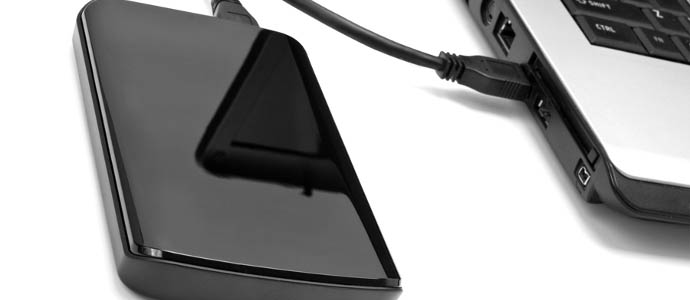Last Updated on May 1, 2024 by Daniel Osakwe
I’m sure you’ve been backing up your computer for years. I have as well. And as much as you know the importance of backing up your computer, you probably realize that you rarely actually do it. Why? Because, well, it’s time-consuming and complicated.
It shouldn’t be that way though, so let me tell you about a simple little tool that can change your life and make it a lot easier to backup all your important information onto external hard drives (as well as CDs and DVDs).
Table of Contents
How to Back Up a Computer to an External Hard Drive
Types of Computer Backups
Depending on your needs, you can perform two types of backups.
- Partial Backup: Here, only important files and folders are backed up.
- Full Backup: Make an exact “clone” of your entire system, including the system settings, your essential files, and everything else on your hard drive.
Making a Partial Backup of Your Computer

To automatically back up specific files and folders on your computer, you can choose a regular schedule for saving them.
Note: In spite of not protecting your operating system settings, a partial backup saves all your important files without taking up too much space on your computer.
Using this method, files are more conveniently and efficiently protected and can be reinstalled onto a recovered Windows 10 computer if you need to.
- Open the System Settings area on your computer by clicking Start and typing “backup.” Select Backup settings to open the Backup area.
- To back up the files in the file history, select Add a drive under the Backup section.
- Upon clicking this, you will see a list of all the external drives you have connected. Choose the external drive where you want to backup your important documents and folders.
- The option to automatically backup my files should be enabled now. By default, it will use files and folders that most users want to keep backed up. You can add additional files and folders by clicking the More options button.
- Re-examine the files under Backup these files. You can add additional folders if they aren’t already included in the list by selecting Add a folder and then browsing.
Please note that you can remove any folder from the list that you do not want to include, by selecting it and removing it from the list.
Making a full backup of your computer

This is called a “system image.” When you copy this to an external drive, it will be a complete backup of your Windows 10 system. Using this system image, you can recover your operating system and all settings if you ever need to restore your computer.
In comparison to a partial backup, a full backup takes up much more storage space. To reduce this space requirement, you should get rid of any old cache and log files in your system.
This will require over 200 GB of space, so you’ll need an external hard drive with a minimum capacity of 250 GB or more.
- Select the Control Panel app by typing “control panel“.
- Go to the Control Panel and select Backup and Restore (Windows 7).
- From the left navigation menu, choose to create a system image.
- On the hard disk dropdown, select your external hard drive from the Create a system image popup window.
- Your external hard drive will be configured to back up a list of your system partitions. Start the backup by selecting Start backup.
- You may need to wait a considerable amount of time for the backup to finish. Check back after some time. After the backup is complete, you can disconnect the external drive and store it safely.
Frequently Asked Questions
- How can I use an external hard drive for backup and storage?
As long as you have enough space on your external drive, you can use the same device to backup your computer and store specific files. If you cannot do this, you may want to consider separating your hard drives: one hard drive for transferring files to save space on your computer and another one for backing up your files. To use part of the external hard drive for backups and the other portion for storing other files, you’ll need to create an APFS volume on the Mac using Time Machine.
- How do I back up my Mac to an external hard drive?
Back up your Mac to an external drive using Time Machine. By choosing System Preferences > Time Machine > Select Backup Disk, you can make the drive your preferred backup drive. When you connect your Mac to your external drive, you can choose between manual or automated backups that start at specific intervals. You can backup essential files either manually or by using iCloud.



